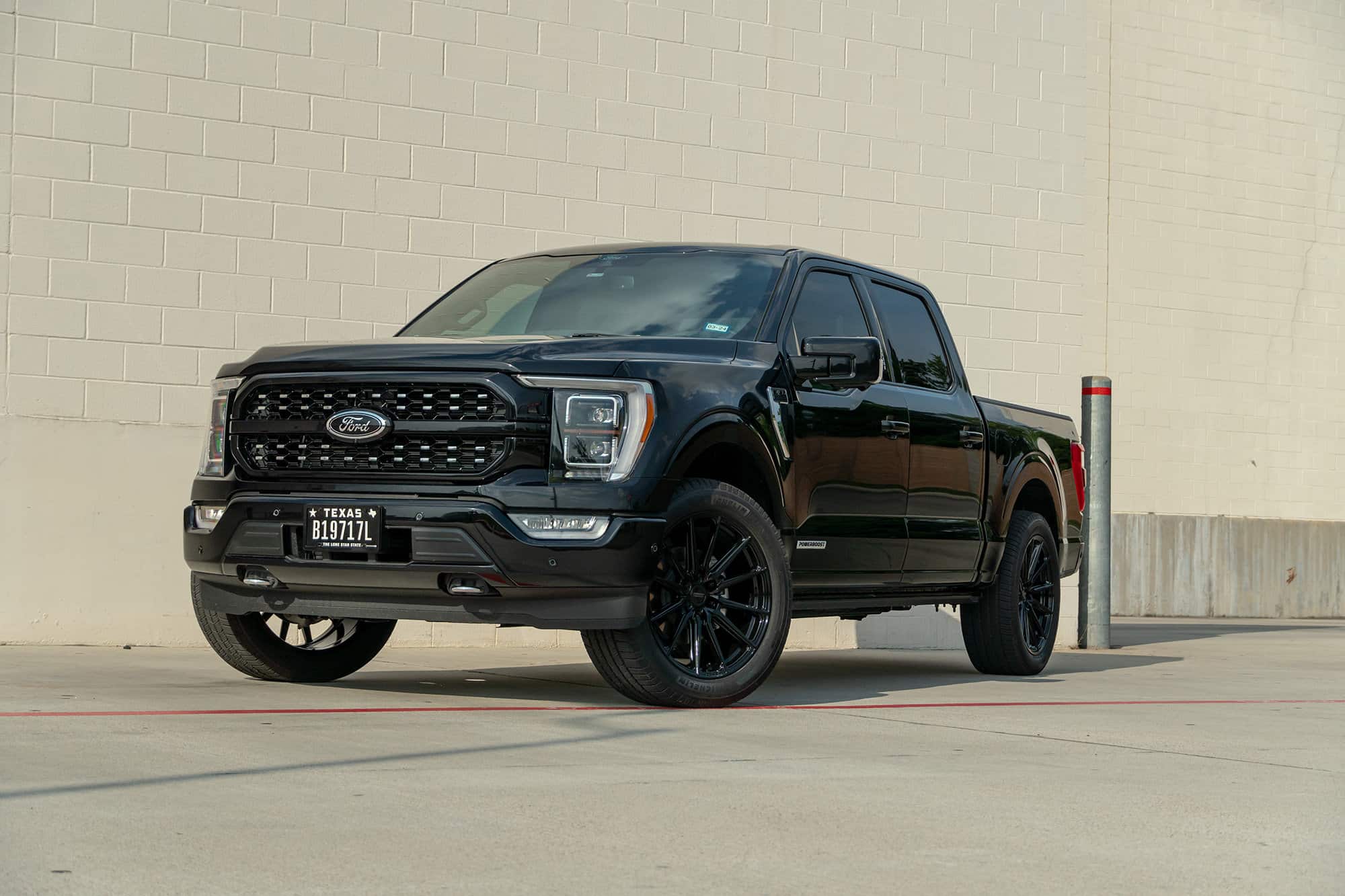When people talk about fuel economy, they usually focus on highway and city MPG ratings. But one of the biggest, most overlooked fuel drains is idling. Whether you’re stopped at a traffic light, stuck in gridlock, or just letting your engine run on the jobsite, idling can burn through fuel fast—especially for trucks with large engines.
For fleet managers and daily drivers alike, knowing which trucks burn the most and least fuel at idle can help save money and cut down on emissions.
Idle fuel consumption is typically measured in gallons per hour (GPH), and the difference between a smart hybrid system and a traditional gas V8 can be dramatic. Below are the five trucks that consume the least fuel at idle, followed by five that guzzle fuel even when standing still.
Top 5 Trucks with the Lowest Idle Fuel Consumption
When it comes to fuel economy, most truck owners focus on highway and city MPG—but there’s another hidden cost that burns a hole in your fuel budget: idling. Whether you’re stuck at a red light, waiting in a work zone, or warming up the engine on a cold morning, idling can quietly burn gallons of fuel over time.
For fleet operators and everyday drivers alike, this adds up fast. Fortunately, not all trucks are fuel hogs when standing still. Thanks to hybrid tech, smart engine management, and efficient diesel designs, some pickups sip fuel at idle while others chug it like they’re still towing a trailer.
In this article, we’re zeroing in on the top 5 trucks that consume the least fuel while idling, so you can make a smarter choice whether you’re on the jobsite, in traffic, or just parked with the engine running.
1. Ford F-150 PowerBoost Hybrid
The Ford F-150 PowerBoost Hybrid is the clear leader in idle efficiency, using as little as 0.2 gallons of fuel per hour. Its 3.5L EcoBoost V6 is paired with a 35kW electric motor, and the full hybrid system can run accessories and cabin systems on battery power alone.
That means the engine can remain off entirely during idle in many conditions, especially in light load or urban settings. This truck’s ability to silently glide through stop-and-go traffic without sipping fuel is unmatched, making it the top choice for drivers who idle often.
The Ford F-150 has consistently ranked among the best-selling pickup trucks for decades—and with good reason. Known for its durability, dependability, and impressive performance, the F-150 has earned a solid reputation.
The introduction of the 2024 Ford F-150 Hybrid further enhances this iconic lineup. This latest iteration brings a refreshed interior, improved features, and cutting-edge technology, all designed to meet the changing demands of today’s truck buyers.
Ford engineered the F-150 Hybrid to be a versatile powerhouse, capable of tackling tough tasks thanks to its robust engine that delivers impressive output without sacrificing fuel economy. This hybrid pickup successfully merges power and efficiency, making it a smart choice for anyone who wants the strength of a traditional truck while reducing fuel expenses and environmental impact.
The 2024 Ford F-150 blends ride comfort with rugged off-road readiness, making it equally suited for daily commuting or tough jobsite use.
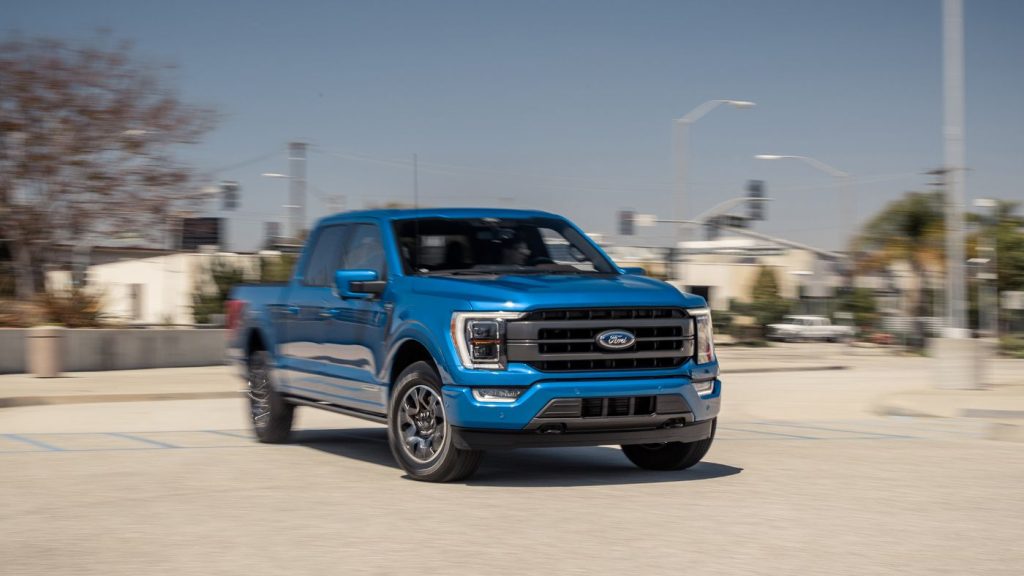
The 3.5-liter PowerBoost Hybrid V-6 engine is available on the Lariat, King Ranch, and Platinum trims. In terms of exterior styling, the hybrid versions of this full-sized truck are identical to their gas-only counterparts. The only external difference is the ‘Powerboost’ label on the door, indicating its status.
In the Platinum trim, the 2024 Ford F-150 Hybrid includes a host of exterior design elements: LED projector headlamps, LED taillamps, and LED fog lamps with a cornering function. Gloss black surrounds and accents highlight the grille, while body-colored door and tailgate handles contribute to a refined appearance.
The truck is also equipped with skid plates for the fuel tank, transfer case, and front differential, along with cast aluminum running boards and 20-inch gloss black wheels. A twin-panel moonroof is available as an optional upgrade.
Because the hybrid powertrain is only available in the upper trims of the 2024 Ford F-150 lineup, buyers benefit from a wide array of premium features regardless of the version they choose.
The Lariat, for instance, comes with amenities such as rain-sensing wipers, heated and ventilated front seats, and Alcantara Suede leather upholstery. However, the full suite of luxury equipment is only found in the top-of-the-line Platinum trim.
The standard equipment list on the 2024 Ford F-150 Hybrid Platinum includes push-button start/stop, heated and ventilated front seats, a heated steering wheel, a 10-way power-adjustable driver’s seat, a powered front passenger seat, and a powered tilt-and-telescoping steering wheel with memory functionality. Premium leather upholstery adds to the overall upscale feel.
Optional features on the Platinum trim include dual-zone automatic climate control and a console work surface that adds utility to the cabin. Ford’s advanced safety and driver-assist packages—Co-Pilot360 2.0 and Co-Pilot360 Assist 2.0—come standard, while features like Co-Pilot Active 2.0 and the BlueCruise hands-free highway driving system are available for an added cost.
Also Read: Top 10 Long-Lasting Cars That Get Over 30 MPG
2. Toyota Tundra i-FORCE MAX Hybrid
Close behind is the Toyota Tundra i-FORCE MAX Hybrid, which uses roughly 0.25 gallons per hour at idle. Its 3.4L twin-turbo V6 is backed by an electric motor that assists with acceleration and powers the truck’s systems at idle.
Like the F-150 Hybrid, the Tundra’s engine frequently shuts off when the truck is stationary, especially under light electrical load. This not only cuts fuel use but also reduces wear on engine components. For those looking to combine modern power with idle efficiency, this hybrid Tundra is a solid pick.
The 2025 Toyota Tundra i-Force Max Hybrid is reshaping the full-size pickup segment with its bold styling and innovative hybrid technology. It brings together brute strength, fuel efficiency, and Toyota’s signature reliability, making it an appealing option for both those who rely on their truck for hard work and those who crave adventure on the weekends.
From hauling heavy payloads to taking on challenging off-road terrain, the 2025 Toyota Tundra i-Force Max Hybrid stands out for its remarkable versatility in any environment.
This detailed guide will dive into its performance, technology, safety features, and the reasons why it ranks as a top pick for truck buyers in 2025. Let’s explore what sets this hybrid pickup apart from its competitors in an increasingly crowded and competitive market.
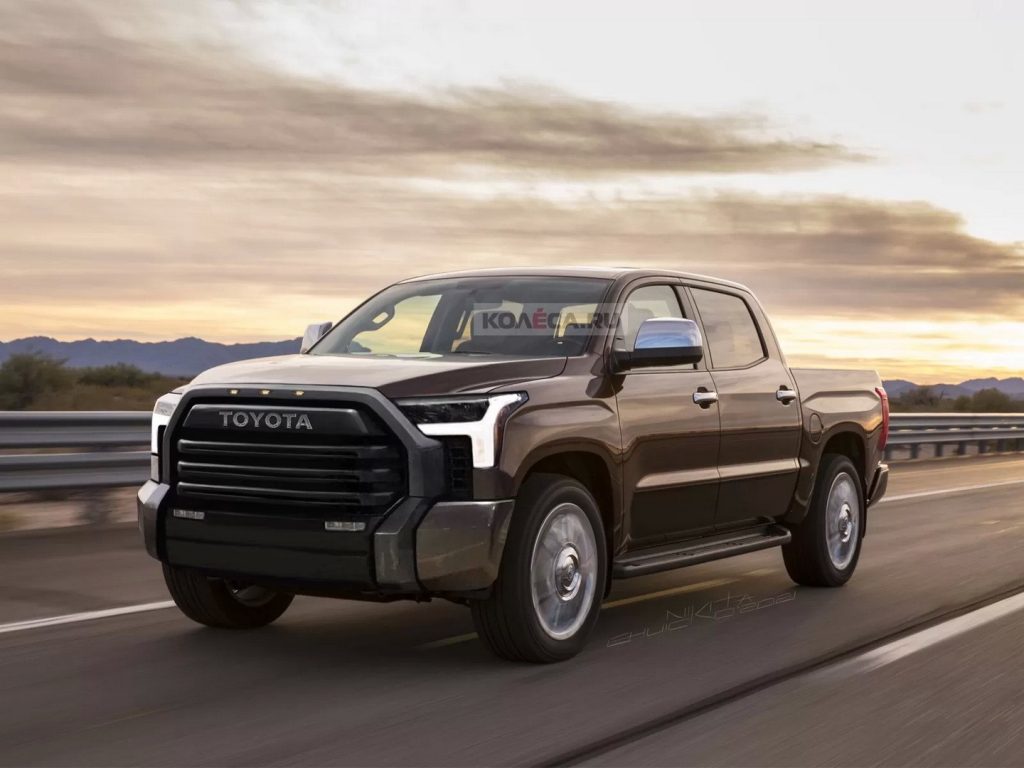
Under the hood, the 2025 Toyota Tundra i-Force Max Hybrid is powered by a next-generation i-Force Max hybrid powertrain. A 3.4-liter twin-turbocharged V6 engine works in tandem with a 48-horsepower electric motor, producing a total output of 437 horsepower and an impressive 583 lb-ft of torque.
The electric motor is seamlessly integrated with a 10-speed automatic transmission, allowing for instant torque delivery and smooth, responsive acceleration. With maximum torque arriving at just 2,400 rpm, this setup is engineered for serious tasks and heavy-duty performance.
For those interested in digging deeper into the numbers, the full specs can be found in the official 2025 Toyota Tundra i-Force Max Hybrid specifications.
What sets the i-Force Max apart from many other hybrids is its focus on delivering robust power while still offering increased fuel efficiency compared to traditional gas-powered trucks. It’s a rare balance of brawn and brains—built to tackle tough jobs without sacrificing modern efficiency.
3. Chevrolet Silverado 1500 3.0L Duramax Diesel
The Chevrolet Silverado 1500 with the 3.0L Duramax diesel engine consumes about 0.3 gallons per hour while idling. Diesel engines generally idle more efficiently than gas engines, and the Duramax’s inline-6 layout helps reduce internal friction and idle RPMs.
Unlike traditional gas V8s, this diesel doesn’t require high RPMs to keep systems running, making it a practical and quiet option for long idle periods, especially in colder climates or while running power tools on job sites.
The first-generation 3.0-liter LM2 Duramax diesel engine was a General Motors product built in Michigan. It marked a significant milestone as the first diesel engine offered in GM’s Chevy and GMC light-duty trucks since 1997, and notably, it was also the first inline-six turbodiesel used in GM’s light-duty full-size trucks.
At the time of its release, GM stated, “From the moment the engine is started, to its idle, acceleration, and highway cruising, the 3.0L Duramax performance will change perceptions of what a diesel engine can offer in refinement.
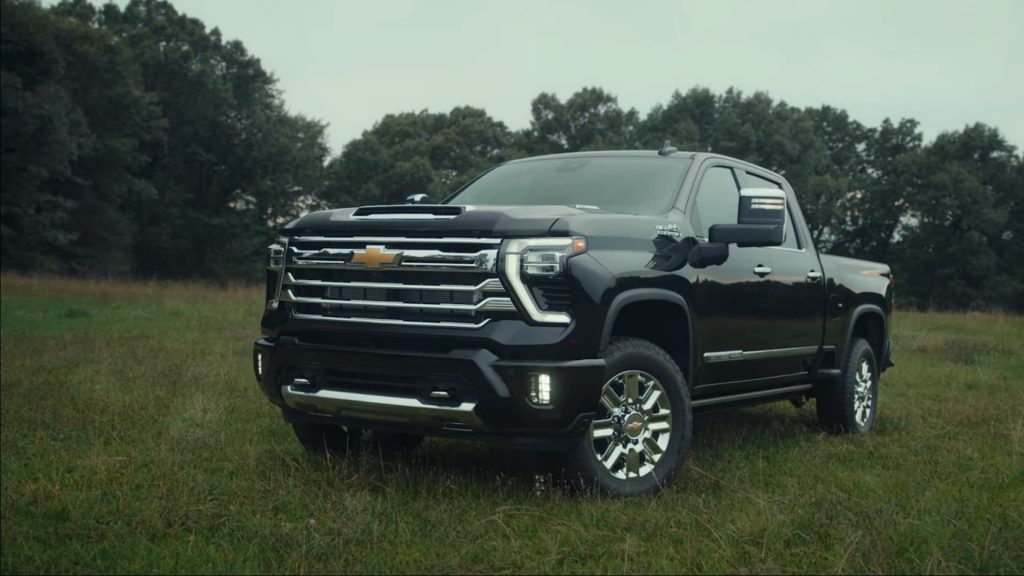
With advanced technologies that draw on global diesel expertise, it’s a no-compromise choice for those who want the capability and driving range of a diesel in a light-duty truck.”
The 3.0-liter LM2 Duramax made its debut late in the 2019 model year for the Chevy Silverado 1500 and GMC Sierra 1500, with the 2020 model year being the first full year of availability. This engine was paired with GM’s Hydra-Matic 10L80, a 10-speed automatic transmission also manufactured by General Motors.
For the Chevrolet Silverado, the Duramax option was available on LT, RST, LTZ, and High Country trims. GMC offered the engine as an option on several of its Sierra 1500 trims, including the CarbonPro Edition, Denali, AT4, SLT, Elevation, and SLE.
The engine was priced at $2,495. GM emphasized its goals at the time by stating, “We set out to offer light-duty truck customers the best of diesel—outstanding fuel economy, great horsepower, and responsive torque—plus unexpected levels of refinement.
We leveraged our global diesel expertise to make sure the all-new 3.0-liter Duramax turbodiesel engine offers the impressive performance and durability our truck customers demand.”
4. Ram 1500 eTorque V6
The Ram 1500 equipped with the eTorque mild hybrid system and 3.6L Pentastar V6 uses approximately 0.35 gallons per hour when idling. The eTorque system combines a small battery with a motor-generator to shut off the engine when the truck stops and restart it instantly when needed.
This mild hybrid setup isn’t as aggressive as a full hybrid, but it still helps reduce idle fuel use significantly. For drivers who want a smoother idle-stop experience without going full hybrid, this setup strikes a good balance.
When the Ram 1500 accelerates at low speed, its regenerative system functions like an electric motor that supplements the engine by delivering power directly to the crankshaft, essentially acting as a helping hand.
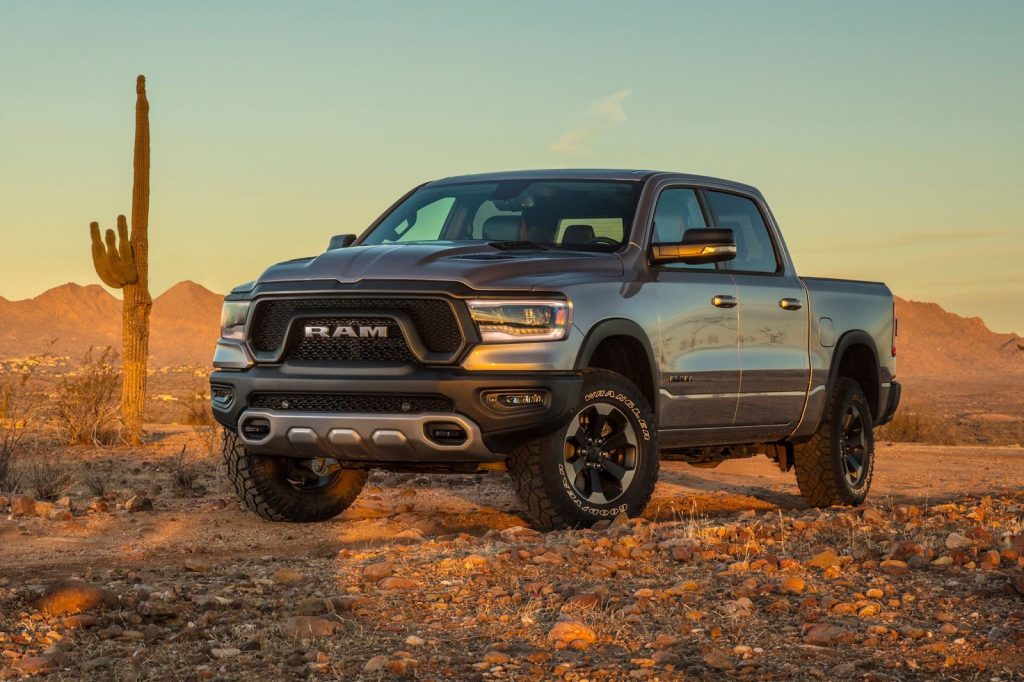
During coasting—when the driver lifts off the throttle—or when the brake pedal is lightly pressed, the slowing motion of the crankshaft causes the eTorque system to reverse its role. In this mode, it shifts from functioning as an assistive motor to becoming a generator that is now being spun by the engine.
The energy it captures in this process is stored in a 430 watt-hour, air-cooled, lithium-ion battery pack. Roughly the size of a small suitcase, this battery is installed inside the passenger cabin, mounted against the rear wall between the seats and the pickup bed.
Also Read: 5 Used Cars That Dealers Are Paying Top Dollar For and 5 They Won’t Touch
5. Honda Ridgeline
The Honda Ridgeline rounds out the low-idle-consumption list, burning about 0.4 gallons of fuel per hour. Its 3.5L V6 engine is smaller and more efficient than those found in most full-size trucks.
Coupled with a responsive idle-stop feature, the Ridgeline minimizes fuel burn while waiting at lights or stuck in traffic. Its unibody construction makes it more car-like in weight and behavior, which contributes to its overall fuel efficiency.
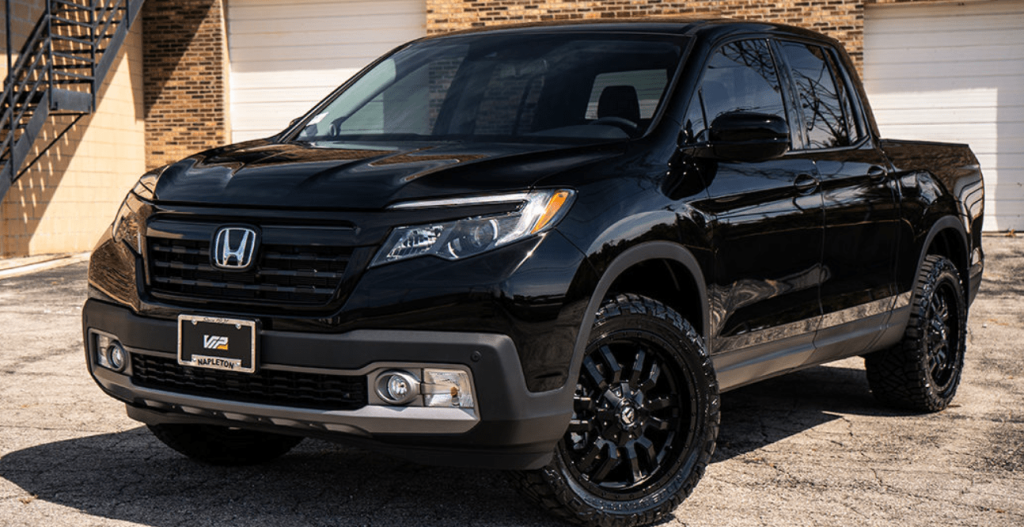
The Honda Ridgeline has consistently ranked among our top choices for midsize pickups, thanks to its smooth ride quality and spacious seating. While it may not rival some competitors in terms of maximum towing capacity or off-road capability, it stands out as the most practical and well-rounded option in the midsize truck segment.
The main drawback is its age. Since the current-generation Ridgeline debuted back in 2017, nearly every other midsize pickup has either undergone a full redesign or entered the market as a new model. Although Honda has no plans to redesign the Ridgeline for the 2025 model year, we anticipate a significant update is on the horizon.
Top 5 Trucks That Guzzle the Most Fuel at Stoplights
Think your truck’s bad fuel economy only hits you on the highway? Think again. Some pickups burn an alarming amount of fuel just sitting still.
Whether it’s at a stoplight, in traffic, or idling on the job, certain trucks guzzle gas like they’re still hauling a full load. Blame it on oversized engines, poor idle management, or lack of stop/start tech—either way, these trucks waste serious fuel every time you wait for the light to turn green.
If you’re watching your fuel costs or managing a fleet, knowing which trucks are the worst idle offenders is more important than ever. In this article, we break down the top 5 fuel-guzzling trucks at stoplights, based on real-world idle consumption data.
1. Ram 2500/3500 with 6.4L HEMI V8
At the top of the gas-guzzling list is the Ram 2500 and 3500 series equipped with the massive 6.4L HEMI V8 engine. These heavy-duty trucks can consume over 1.0 gallon per hour when idling.
Designed for towing and hauling rather than efficiency, they lack any form of idle-stop or hybrid tech. The HEMI’s large displacement and high idle RPMs mean it’s burning fuel even when it’s not moving, which can add up quickly for contractors or fleet vehicles that idle on job sites.
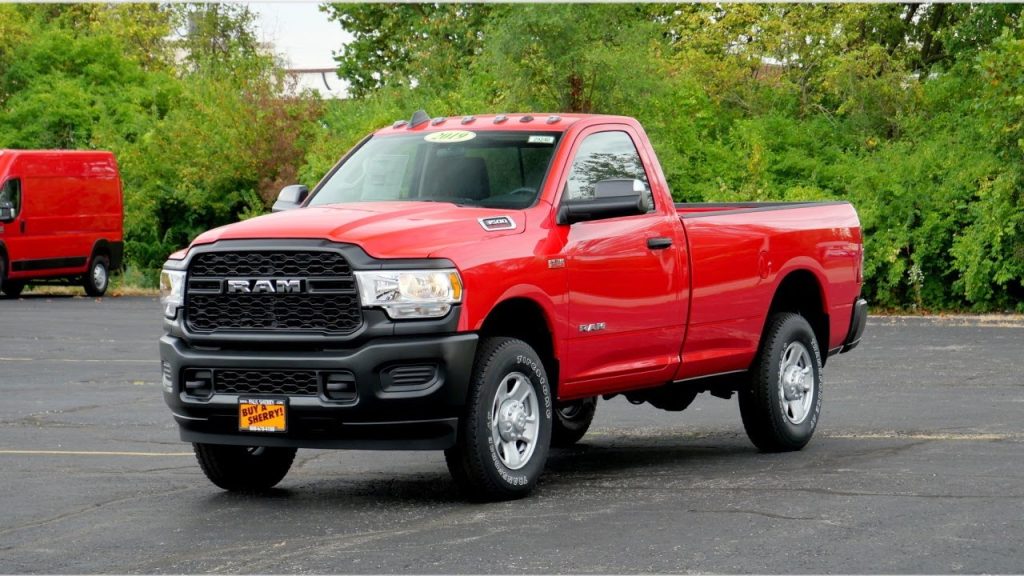
The 2025 Ram 2500 builds upon the already strong foundation of one of our favorite heavy-duty pickups, bringing with it a series of meaningful updates and enhancements—most notably the introduction of a new-and-improved Cummins turbodiesel engine. The truck was already commendable in terms of towing capability and interior technology, and both aspects have seen further improvement.
One of the most striking additions is the availability of a massive, tablet-sized 14.5-inch screen. Beyond the specs, the Ram 2500 continues to impress with its comparatively comfortable ride and overall refinement, qualities that give it an edge in ways not always captured on a data sheet.
2. Ford F-250/F-350 Super Duty 6.7L Power Stroke Diesel
Coming in at around 0.9 gallons per hour of idle fuel use, the Ford Super Duty lineup with the 6.7L Power Stroke Diesel is another heavy-duty workhorse that doesn’t idle efficiently.
These diesel engines often idle at higher RPMs to maintain emissions systems and charge batteries. Many are also programmed to run during DPF regeneration cycles, further increasing fuel use during idle periods. They’re excellent for heavy hauling, but not ideal if your truck spends hours parked with the engine running.
The 6.7L Power Stroke is the first diesel engine to be fully designed, developed, and manufactured in-house by Ford Motor Company for use in its pickup and chassis cab truck applications.
It was introduced to the Ford Super Duty lineup—which includes the F-250, F-350, F-450, and F-550—for the 2011 model year, replacing the short-lived 6.4L Power Stroke that had been produced by International-Navistar.

This change also marked the end of a decades-long partnership between Ford and International-Navistar. Ford’s strategic decision to end the relationship was driven by several factors, including at least one major lawsuit over responsibilities related to warranty claims.
During development, the 6.7L Power Stroke carried the internal codename “Scorpion,” a name inspired by the unique configuration of its turbocharger system.
Unlike traditional layouts, this design channels exhaust gases into a centrally mounted turbocharger located in the engine’s valley, while the intake ports are positioned on the lower sides of the cylinder heads—where exhaust manifolds would typically be found. This innovative setup contributed to the engine’s distinctive identity during its developmental phase.
3. Chevrolet Silverado HD 6.6L Gas V8
The Chevrolet Silverado HD with the 6.6L gas V8 engine burns roughly 0.85 gallons per hour at idle. This engine is powerful but lacks modern fuel-saving features like idle-stop, and its large displacement means more fuel is used to keep it running—even when it’s not moving.
In fleet use, this kind of idle performance can translate to major fuel losses over time, particularly on construction or service sites where trucks often remain on for hours.
The 6.6L L8T gasoline engine replaces the previous 6.0L V-8 in Chevrolet and GMC 2500HD and 3500HD applications. Producing 401 horsepower and 464 lb-ft of torque, the 6.6L delivers a substantial improvement in performance over the 6.0L V-8, which generated 360 horsepower and 380 lb-ft of torque.
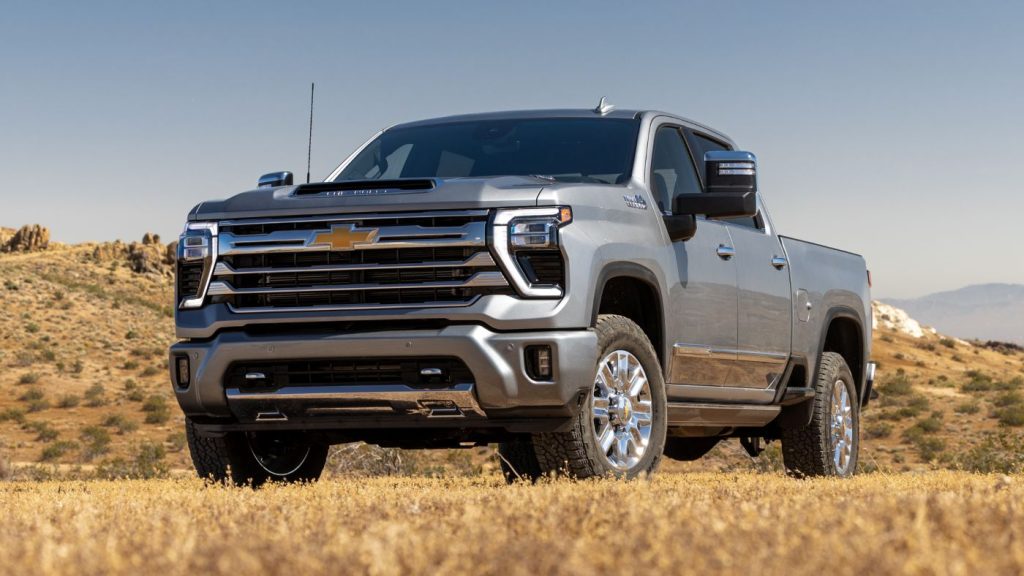
The L8T is a conventional cam-in-block pushrod V-8 that operates on regular 87 octane unleaded gasoline, despite having a relatively high compression ratio. It is built with a deep-skirted cast iron engine block, enhancing the engine’s structural rigidity at the bottom end and helping to minimize engine harmonics.
It’s important not to confuse this engine with the 6.6L Duramax diesel, even though they share similar bore diameters, stroke lengths, and therefore the same overall displacement.
4. Toyota Tundra 5.7L V8 (2021 and earlier)
The pre-2022 Toyota Tundra, powered by the 5.7L V8, uses about 0.8 gallons per hour when idling. This older engine design prioritizes raw power over fuel efficiency and lacks idle-stop technology.
Even though it’s reliable and beloved by many for its durability, it’s a fuel hog at stoplights. The updated Tundra models, now using twin-turbo V6 hybrid setups, have addressed this issue—but older models remain gas-thirsty while idling.
The 3UR-FE engine is part of Toyota’s UR family and represents the largest displacement variant within that lineup. This 5.7-liter V8 features an aluminum block and heads, and it was specifically engineered for use in heavier Toyota vehicles such as the Tundra, Sequoia, Land Cruiser, and the Lexus LX570. The 3UR-FE served as an appropriate successor to the 4.7-liter 2UZ-FE engine, delivering more power and refinement suited for full-size applications.
Like other engines in the UR family—including the 1UR-FE/FSE and 2UR-GSE/FSE—the 3UR-FE uses an aluminum cylinder block with a 90-degree ‘V’ configuration. It has a bore pitch of 105.5 mm and a 21.0 mm offset between cylinder banks. All UR engines share a 94 mm bore size, while the 3UR-FE’s stroke of 102.0 mm increases total displacement to 5.7 liters.
The engine is equipped with a forged steel crankshaft featuring six balance weights, forged connecting rods, and aluminum alloy pistons that have a resin coating. Additionally, four oil jets located in the block spray oil onto the pistons for cooling.
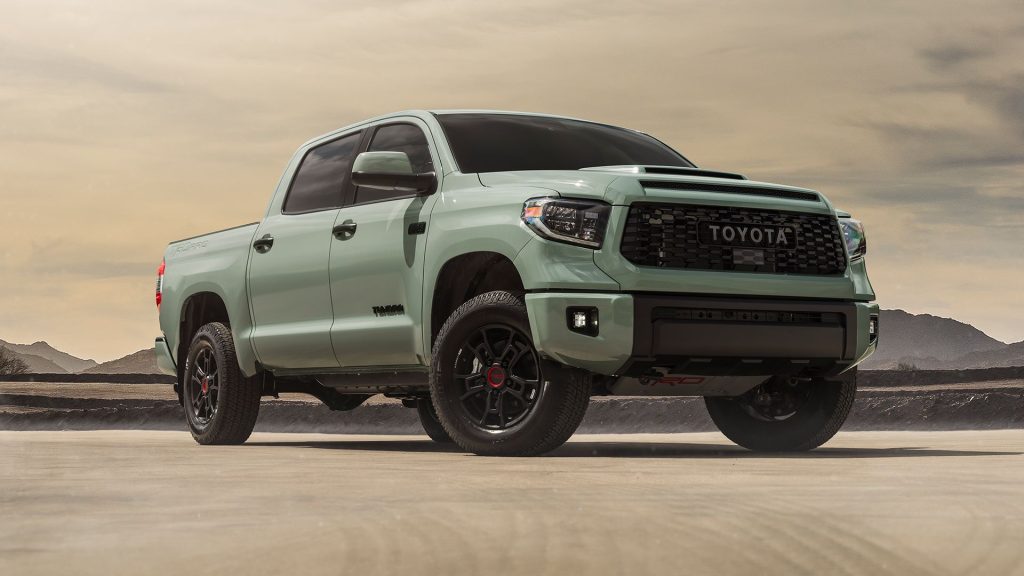
The cylinder heads on the 3UR-FE are aluminum alloy and mirror each other in design. Each head integrates camshaft housings and contains four valves per cylinder—two intake and two exhaust valves—driven by dual overhead camshafts.
Valve actuation is handled by roller rocker arms, and the engine includes hydraulic lifters. The 3UR-FE employs two primary timing chains to operate the intake camshafts, while each intake camshaft also powers its respective exhaust camshaft via a secondary chain.
All timing chains are tensioned by mechanisms that rely on oil pressure and springs. Camshaft angles for both intake and exhaust are continuously controlled using Toyota’s “Dual Variable Valve Timing – intelligent system (Dual VVT-i).”
The intake manifold is made from plastic and includes Toyota’s Acoustic Control Induction System (ACIS), which varies intake runner length based on engine speed to improve performance. Throttle actuation is handled by a linkless throttle body managed by the “Electronic Throttle Control System – intelligent (ETCS-i).”
The 3UR-FE uses only sequential fuel injection (SFI), without direct injection. Airflow is measured by a slot-in-type air flow meter that also incorporates an intake air temperature sensor.
The ignition system is Toyota’s Direct Ignition System (DIS), featuring an individual ignition coil for each cylinder. Spark is delivered by iridium-tipped spark plugs, designed for an extended service interval.
The exhaust setup on the 3UR-FE includes 4-2-1 stainless steel headers. This semi-dual design minimizes exhaust gas interference and enhances torque at mid-range engine speeds. To meet stringent emission regulations, the engine is equipped with ceramic three-way catalytic converters on both sides and includes an Exhaust Gas Recirculation (EGR) system.
5. Nissan Titan 5.6L V8
The Nissan Titan rounds out the list with idle fuel consumption around 0.75 gallons per hour. Its 5.6L V8 is tuned for performance, not economy, and has no hybrid system or idle-stop feature. While the Titan delivers strong towing numbers and good throttle response, it pays the price at idle, especially in urban or stop-and-go driving.
Idling may seem harmless, but over time, it racks up real costs. For everyday drivers and fleet operators alike, choosing a truck with smart idle fuel management can save hundreds of gallons per year, especially in traffic-heavy or jobsite-heavy use cases.
The 2024 Nissan Titan continues to face challenges in establishing itself within the full-size truck segment. This isn’t due to shortcomings in comfort or power—it’s actually quite the opposite.
The Titan is recognized for its exceptionally comfortable interior and a standard 400-hp V-8 that delivers ample power. However, the truck falls behind in several key areas that matter most to buyers.
Beyond competing with entrenched domestic rivals like Ford, Chevrolet, and Ram, the Titan is hindered by its limited trim options, lacking both low-cost entry-level versions and upscale luxury variants. Its towing capabilities don’t match top competitors, and it’s also missing some of the latest tech features available elsewhere in the segment.
While Nissan attempts to bridge that gap by offering the best warranty in its class—five years or 100,000 miles—it hasn’t been enough to win over a substantial portion of the market. Consequently, Nissan has announced that production of the Titan will end in the summer of 2024.
For 2024, the most significant update to the Titan lineup isn’t the introduction of the Bronze Edition package, but rather the removal of the entry-level S trim. This elimination pushes the truck’s base price up by more than $5,000.
The SV trim now becomes the most affordable version and is also the only one that can be optioned with the Bronze Edition package, which costs an additional $2,980. This special package includes bronze 20-inch wheels, a black grille surround and center bumper section, and a bed-mounted sport bar. Nissan has confirmed that it will halt production of the Titan in summer 2024.
Pricing for the 2024 Nissan Titan starts at $48,700 and can reach up to $62,370 depending on configuration and features. Trim levels are priced as follows: SV at $48,700, PRO-4X at $56,510, and Platinum Reserve at $62,370.
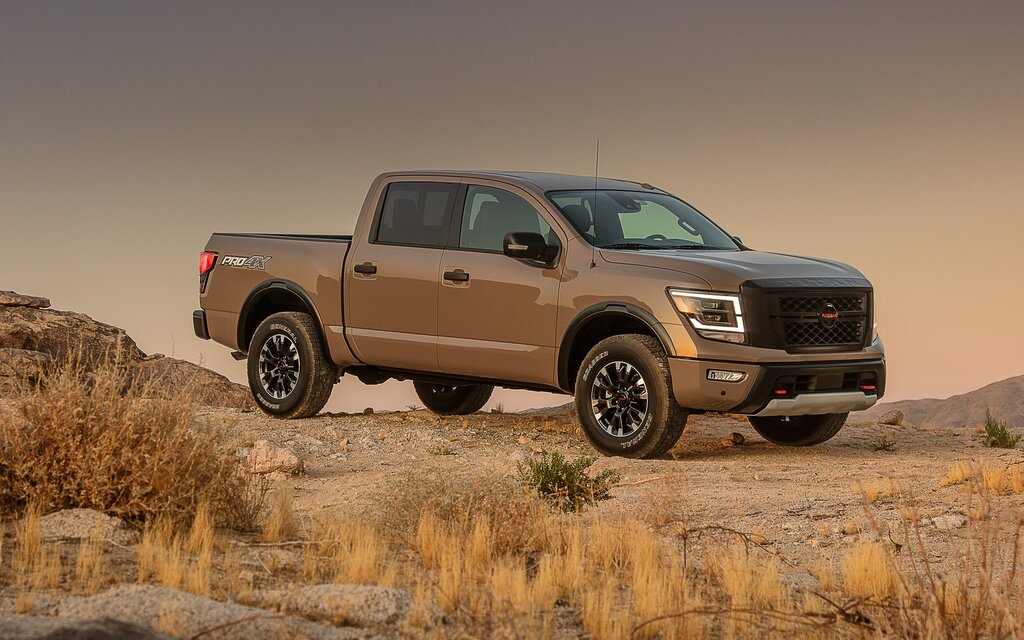
With the S trim discontinued, the crew cab SV with rear-wheel drive now offers the best value as the entry point into the lineup. Buyers who prefer added capability can choose all-wheel drive for an extra cost.
Though this setup limits optional upgrades, it still includes a solid array of standard features, such as an 8.0-inch touchscreen with Apple CarPlay and Android Auto, along with driver-assist technologies like automated emergency braking, blind-spot monitoring, rear cross-traffic alert, and lane-departure warning.
Unlike its competitors that offer multiple engine options, the Titan comes with a single powertrain: a 5.6-liter V-8 generating 400 horsepower and 413 lb-ft of torque, paired with a nine-speed automatic transmission.
The Titan prioritizes durability and off-road capability over on-road finesse. While it matches other V-8-powered trucks in acceleration and delivers solid braking, its handling and steering are less refined.
Although the Titan and Titan XD share cabs and various components, they ride on different chassis and suspensions. The Pro-4X variant features off-road-specific shocks that are stiffer than similar setups in rival trucks. When tested during the Titan’s 2020 refresh, its ride quality still lagged behind segment leaders like the Ram 1500.
Towing and payload ratings place the Titan near the bottom of the pack, but its maximum towing capacity of 9,660 pounds—and a minimum of 9,240 pounds across all models—remains sufficient for the needs of most owners.
Fuel economy ratings for the Titan are modest. Rear-wheel-drive models earn an estimated 16 mpg in the city and up to 21 mpg on the highway, while four-wheel-drive versions drop slightly to 15 mpg city and 20 mpg highway.
The off-road-focused Pro-4X trim is rated at 15 mpg city and 20 highway. Although it hasn’t yet been tested on the 75-mph highway fuel-economy loop, those figures will be assessed in due time. Additional fuel economy information is available on the EPA’s website.
Inside, the Titan delivers impressive comfort, particularly in the front seats, which Nissan dubs “Zero Gravity” and are among the most supportive in the segment. Premium interior materials are largely reserved for the top-tier Platinum Reserve trim.
Unfortunately, the interior’s design is rather plain, and the widespread use of hard plastics detracts from its appeal. The crew cab also has the least rear-seat legroom of any full-size pickup.
Trucks with hybrid systems or smaller, efficient engines are leading the charge toward better idle fuel performance. On the other hand, those with big, thirsty engines and no idle tech are quietly draining your wallet—one stoplight at a time.
If you’re curious about the actual idle costs for your vehicle or fleet, just say the word—I can help you run the numbers and even estimate the ROI on switching to a more idle-friendly model.

